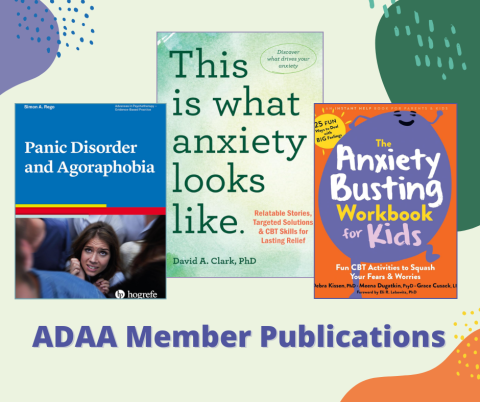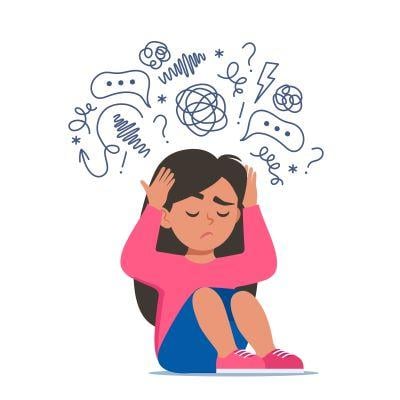We Think Therefore We Are Thinking About Thinking: When Overthinking Becomes A Disorder
We Think Therefore We Are Thinking About Thinking: When Overthinking Becomes A Disorder

As a clinician specializing in treating clients with anxiety and obsessive-compulsive disorder (OCD), my work involves a lot of thinking. My job also requires me to think about what my clients are obsessively thinking about and how I can help them with the hyperawareness of their thoughts. Thinking, and even overthinking, is normal but when it becomes a mental health disorder, known as hyperawareness OCD, the person feels completely distracted and out of control.
Imagine you have just returned from your daily run and are drinking some water, wiping the sweat from your eyes, blinking to let the moisture settle. Things that would be normal after a run. You turn on the television and are quickly engrossed; however, for just an instant, you are preoccupied by an innocuous thought – the blinking of your eyes. This would usually retreat into the abyss of the mind where most thoughts meet their demise, but in the case of hyperawareness OCD, it remains. Moments turn into minutes, possibly hours, and anxiety erupts into panic.
What is Hyperawareness OCD?
Hyperawareness OCD involves exaggerated and unwanted concerns about normal bodily sensations, functions, or processes that would usually be unconscious. The main fear is that the thought will be permanently embedded in the consciousness, resulting in severe stress and anxiety. One’s internal thinking, their thinking that they shouldn’t be thinking what they are thinking (basically thinking about thinking), and then obsessing about the thinking all become so overwhelming and uncontrollable.
Compared to other OCD themes such as violence, contamination, sex or health, thoughts in hyperawareness OCD seem more “tame” but they can be just as debilitating. Those who suffer from this type of OCD also feel “stuck” but differ in recognizing that there is no real purpose behind the obsession.
While these obsessions seem harmless, troubling and frightening concerns do exist, such as:
- I will go crazy because I cannot stop thinking about this.
- Even if I tell someone, they will never understand – which will destroy my life.
- I will never enjoy anything because I will always be thinking about this.
- I will never go back to the way I was before I noticed my swallowing (or the relevant obsession).
Treatment of Hyperawareness OCD
Treatment for this subtype of OCD includes combined approaches of Cognitive Behavioral Therapy (CBT), Exposure and Response Prevention (ERP), and Acceptance and Commitment Therapy (ACT).
In hyperawareness OCD, the person suffering is trying to safeguard the present moment while being over concerned with ruining it. For example, because I am thinking about my blinking, I ought to be thinking about something more satisfying and productive.
CBT is used to challenge how the client interprets these thoughts and gives them a more reasonable and balanced understanding, thereby weakening the OCD story. This works to build confidence so that the client can use both ERP and ACT.
As hyperawareness OCD differs from most OCD, treatment also differs somewhat. Most obsessive compulsive disorders are treated through exposure to the obsession, purposely increasing anxiety while not doing the compulsions, with the idea that over time, the anxiety will decrease. With hyperawareness OCD, the focus of treatment is not so much on the exposure (though some exposures can be helpful) but on response prevention. The goal is to reduce the person’s reaction to bodily sensations by not giving them attention.
When addressing awareness and attention, these terms are often used interchangeably which leads to confusion and inconsistencies with treatment. It is impossible to keep a thought out of awareness, but, if we learn to not give the thought attention, it will go away. In other words, if there is something you want out of your scope of awareness, you cannot force it to leave. The idea is to not actively keep it in your awareness, but to let it go and do nothing. Understanding this difference can be challenging, yet, with practice, we can learn to be aware, allow sensations to exist, and respond without compulsions.
Obsessions and Compulsions in Hyperawareness OCD
While not a complete list, the table below provides some examples of obsessions and compulsions that someone with this type of OCD might experience (note that the examples in each column don’t necessarily correlate):

As a clinician in recovery from hyperawareness OCD, my hope is to educate others on some of the differences of the disorder and what to consider in treatment. Had it not been for the courage and experience of my therapist to educate himself, I most likely would still be “stuck” in “blinking hell.” Instead, I now just accept the fact that “I’m just a guy that thinks about his blinking” and, on most days, my life is brighter.
This post is presented in collaboration with ADAA's OCD and Related Disorders SIG. Learn more about the SIG.




















